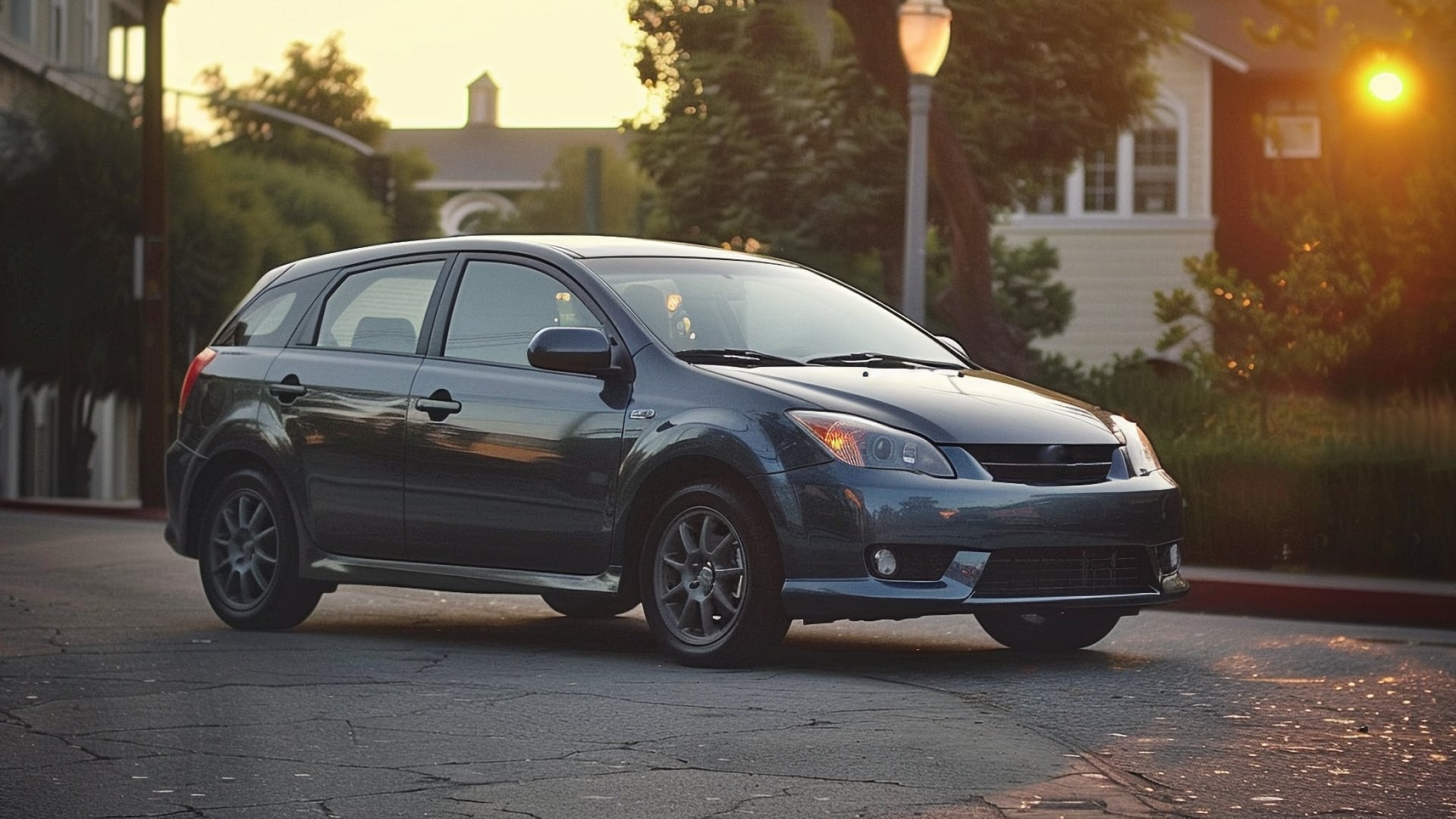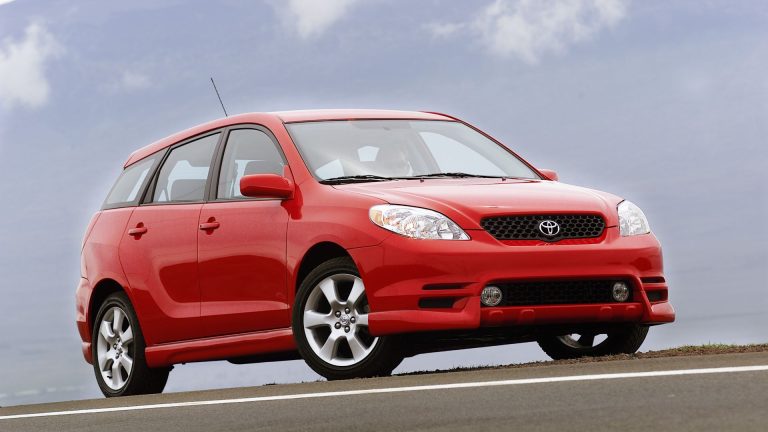Best and worst Toyota Matrix years — which to avoid
Learn to navigate the best and worst Toyota Matrix years by using our team's ratings and criteria laid out in this guide. We made sure to include both consumer feedback and official complaints to rank the Matrix models from best to worst.

The Toyota Matrix is a hugely practical, yet overlooked model and the market for one is pretty decent with fair prices as long as you find a reliable model. However, even though it’s a Toyota, the Matrix isn’t that reliable in all of its renderings, so there are certain Toyota Matrix years to avoid.
Don’t worry – our team will set you on the right track by going through the manufacturer’s recalls, year ratings submitted to NHTSA by real Matrix owners, and reliability scores to help you avoid the bad years and focus solely on the most rewarding ones.
Why you can trust REREV’s advice on which car model years to avoid: Our car experts look at official data, ask real drivers what they think, and talk to experienced mechanics to make sure our list is useful. This reliable info can make buying a car easier for you. Want to know how we do it? Find out more about our research methodology.
How we rated the best and worst Toyota Matrix years
While creating this guide, our team wanted to only focus on double-checked sources of information that you can trust to make this guide 100% accurate and based on factual details. We’ll present the Matrix years as they are to help you decide on which ones to aim for and which ones to avoid.
On that quest, we happened to run into numerous sources including NHTSA’s records which we found to be most helpful in terms of driver complaints and recall logs. Along with these, we also scanned through the Toyota Matrix reviews and ratings left by other drivers, as well as details on safety records of prominent driving safety organizations like EuroNCAP.
| Toyota Matrix Generation | Best Toyota Matrix Years | Worst Toyota Matrix Years |
|---|---|---|
| 1st generation | 2007 | 2003, 2004, 2005, 2006 |
| 2nd generation | 2008, 2010, 2011, 2012, 2013 | 2009 |
Most common Toyota Matrix problems
Since the production of the Matrix didn’t last as long as anticipated before the model was discontinued, there weren’t many issues, to begin with. Still, some of the major problems deserve to be observed closely before you even consider buying them as your next car. There were some slight engine problems with certain 1.8-liter and 2.4-liter engines.
1. Engine-related problems
While there were no engine issues in particular, there are some problems associated with certain Toyota Matrix engines. Starting with the 1.8-liter 1ZZ-FE engine, there’s a problem with cracks at certain solder points that could cause the engine to operate roughly or even turn off while driving and get back on.
On other occasions, it’s possible that the engine won’t crank at all, so it’s worth avoiding this engine option and going for a revised 2ZR-FE 1.8-liter engine. On the other hand, problems with the 2.4-liter engine mostly include increased oil consumption. While it could be a big deal if the engine components lose lubrication, it’s not so dangerous if the oil is frequently changed.
2. Problems with the brakes
Another key problem for owners of Toyota Matrix vehicles is the matter of the braking system problems. Precisely, the braking vacuum may get reduced in colder weather due to factory error in the brake suction port. As a result, drivers of 2009-2010 Toyota Matrix vehicles experienced longer stopping distances than expected.
You can guess that this is a great problem, and bad brake boosters were also a red flag for owners of Matrix vehicles. Overall, it’s worth it to at least inspect the brakes before buying the facelift version of the Matrix.
3. Airbag issues
Toyota Matrix owners have faced quite a bit of airbag problems, from the faulty SRS light appearing on the dashboard, to internal circuit shorts. These shorts were especially dangerous since they could trigger the airbags inadvertently, therefore causing injuries.
On top of that, the airbag inflator bags were problematic and it all led to accumulated pressure within the module and explosions. Naturally, Toyota had to recall quite a bit of both first-gen and second-gen Matrix vehicles to figure out the airbag issue, so buying a recalled car should help.
4. Windshield and visibility
There was also the reported problem of damaged windshield wipers for owners of Toyota Matrix vehicles, and these were mostly associated with modules that control the wipers. Namely, under even the slightest load, the wipers were inoperable, which caused a safety threat for drivers due to lower visibility.
Also, power window controls used to malfunction and it was all caused by electric issues that were sorted out in a 2015 recall.
Worst Toyota Matrix years to avoid

Well, according to all the mentioned problems, driver complaints, and the fact that there were just 10 model years of the Matrix, there are only a few model years to avoid. Here’s what it looks like when it comes to Matrix generations:
- 2003
- 2004
- 2005
- 2006
- 2009
To show you what we mean and point to severe issues that plagued each of these, we’ll further discuss the worst model years through the lens of Toyota Matrix generations.
First-generation Toyota Matrix (model years 2003-2006)
The worst model years in the first generation Toyota Matrix are 2003 and 2006 without any doubt. These are rated the worst based on driver complaints, especially when it comes to the 2003 model year. Some of the main problems include oil leaks, problematic 1ZZ-FE engines, and airbag faults.
The first generation of the Toyota Matrix is also said to have lower interior material quality and peeling paint.
Second-generation Toyota Matrix (2009 model year)
The 2009′ Matrix is by far the worst Toyota Matrix model and it should be avoided at all costs. This model suffers from bad brakes, excessive engine oil consumption, and electrical issues. On top of that, there’s the matter of faulty airbags and it’s not worth it to try and fix these issues.
A much better option is to simply go past it and get a 2011 or later model that received far fewer complaints than 2009 and even the 2010 Matrix.
What are the best Toyota Matrix years to buy?
Don’t think that we’ll only share the worst Toyota Matrix years without highlighting the good ones since it wouldn’t be fair to Toyota. After all, this is one of the brands that are deemed the most reliable on the market and it’s easy to find a reliable Matrix model as long as find an accurate answer to the inquiry – what are the best Toyota Matrix years?
Well, the best Toyota Matrix years are by far 2008 and 2011, but here’s a full list:
- 2004
- 2005
- 2007
- 2008
- 2010
- 2011
- 2012
- 2013
According to the account of driver complaints about this model, the safest model years to go for include 2004, 2008, 2011, and 2013. These are considered the best Matrix models without many mechanical issues or long-term problems that require costly repairs.
2008 Toyota Matrix
Because of the great rating of the 2008 Toyota Matrix model, it often makes it to the shortlists of various automotive enthusiasts and potential buyers. However, it’s not just about the low number of complaints – the 2008 model was the first one among the second-gen Matrix models and it did a lot of things right for owners.
Toyota is known for doing this, as they fixed a lot of the issues of the first generation model with the second one and the 2008 one is a prime example of that. There were no more transmission lurches, engine issues, or stalling while driving, and the model only received some minor complaints about the peeling paint and bad window regulators.
Is the Toyota Matrix worth buying?
If you are looking for an affordable compact car with enough space to fit five people and carry quite some load with the rear seats folded, Toyota Matrix is worth buying. It’s a great model overall for the price and those few issues it comes with can simply be handled by avoiding the worst model years.
In that light, we hope that our team helped you out at least a bit when it comes to choosing the most reliable Matrix model year.
Interested in more compact cars? We’ve dug into Scion xB years to avoid, Mini Cooper years to avoid, and Hyundai Veloster years to avoid to spotlight the years that stand out for their reliability and fun factor, and those you might want to think twice about.
Which year Matrix to avoid?
Toyota Matrix model years 2003, 2006, and 2009 should be avoided since these are deemed the least reliable.
What problems does Toyota Matrix have?
Toyota Matrix has problems with engine stalling, oil consumption, bad brake pressure, and airbags in certain model years.
What is the average life of a Toyota Matrix?
The average life of a Toyota Matrix is around 200,000 miles with proper servicing.